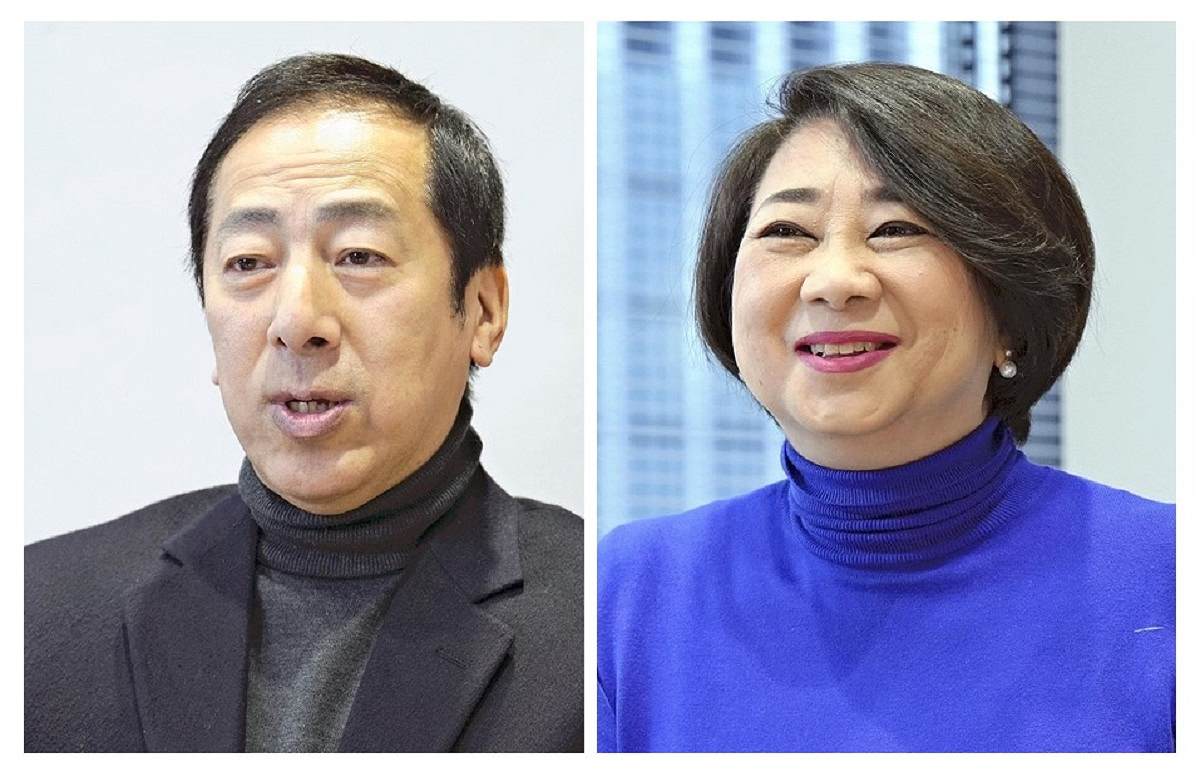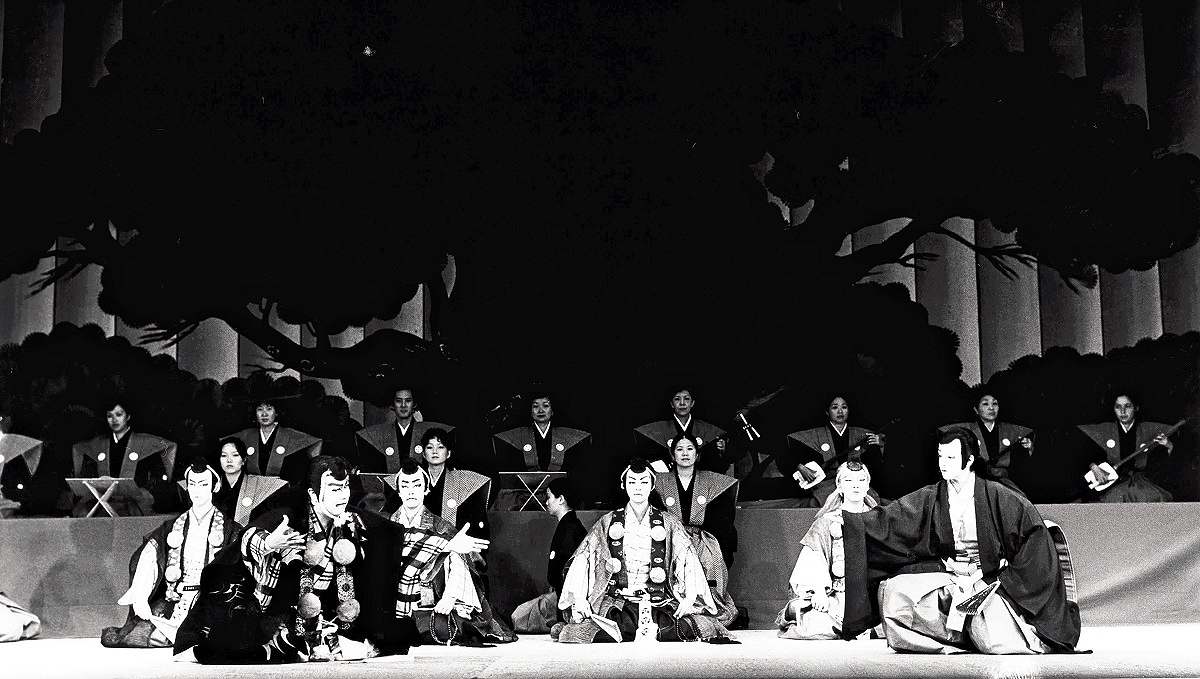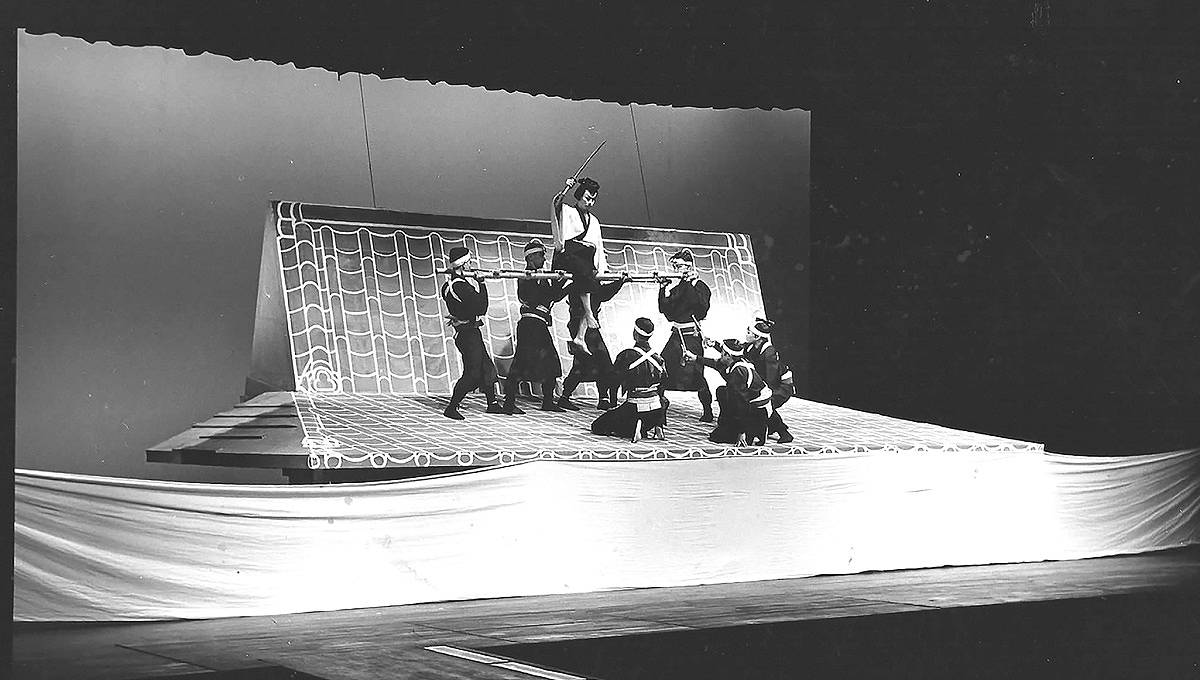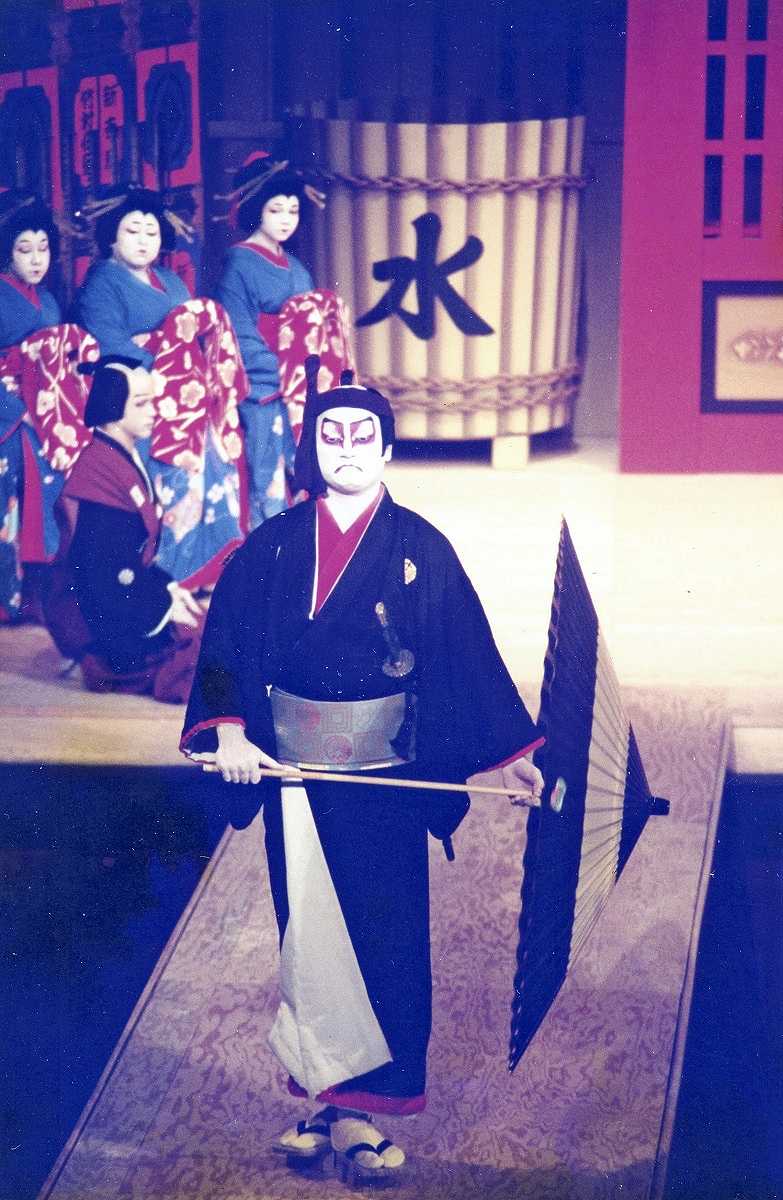Students practice kabuki at the University of Hawaii in November 2023.
3:00 PM JST, May 19, 2024
Kabuki has been passed down from generation to generation in farming villages throughout Japan and has always been a popular form of entertainment there, but the traditional theater art also found its way to Hawaii, brought there by immigrants crossing the Pacific Ocean. Since then, it has been cherished there for more than 130 years.
University of Hawaii students and others will perform jikabuki, a folk art, in Gifu Prefecture’s Aioi-za theater in Mizunami prefecture in June. They plan to “bring back” the kabuki, which has overcome challenges like war, aging instructors and the COVID-19 pandemic in Hawaii, to its place of origin.
Kabuki has a long history in Hawaii. In 1868, immigrants from Japan arrived in Hawaii and began performing kabuki to entertain themselves amid hours of backbreaking labor. After its first public performance in 1893, kabuki proved so popular that playhouses were built on islands outside Oahu.
In 1924, Japanese-American university students performed “The Faithful” – the English title of “Chushingura.” At the time, racial discrimination meant that students were prohibited from playing the roles of white people. It was in that context that they decided to stage their own play.
World War II caused the performances to be interrupted. The university then organized its first post-war performance in 1951, made possible by Prof. Earle Ernst, who had gained a wealth of knowledge from his censoring kabuki scripts in Tokyo for the headquarters of the Allied powers in Tokyo. Ernst can be credited with laying the foundation for theater studies at the university. Other faculty at the university included Japanese Americans who had been involved for years with local kabuki and kabuki actors such as Onoe Kurouemon and Nakamura Matagoro II.
Kabuki performances, staged every few years, continued into the 2000s. However, no performances have been held since 2011 due to the high cost of inviting kabuki actors.

The Asahi-za Theater in the 1910s
‘For the next 100 years’

Ichikawa Monnosuke VIII, left, Yukika Soma
It was under these circumstances that famed kabuki star Ichikawa Monnosuke VIII, 64, stepped up to offer his guidance. His wife Yukika Soma, 63, a former university student, had long wanted to teach kabuki in Hawaii. She contacted Prof. Julie Iezzi, 61, who teaches traditional Japanese performing arts such as kabuki, noh and kyogen, and the two began communicating.
While studying in Japan, Iezzi juggled koto and shamisen practices while earning a master’s degree in musicology from Tokyo University of the Arts – formerly known as Tokyo National University of Fine Arts and Music. Around the time the Japanese couple contacted her, she was concerned about the continuation of kabuki in Hawaii as the Japanese Americans who helped carry the tradition for so many years were aging.
In 2016, Monnosuke visited the university’s John F. Kennedy Theater. When he saw things like the hanamachi corridor that runs through the hall, a bell used in the kabuki play “Musume Dojoji” and the signs with the names of the actors, he knew he had to help continue the kabuki of Hawaii ‘for the next 100 to 150 years.”

“Kanjincho” is performed at the University of Hawaii in 1981.
Exercise is also held in Japanese
However, the planned instructions and performances were postponed due to the pandemic. Last spring, the students learning about kabuki gradually began practicing, and an audition for the upcoming program was held in the fall.
The program is called “Benten Kozo,” a play strongly linked to the theater’s opening performance in 1963. Although the performance will be in English, the students practiced in Japanese before memorizing the English lines so they could could pay close attention to the characteristic seven-and-a-five syllable meter.

“Benten Kozo” is performed at the University of Hawaii in 1963.
“The students don’t understand Japanese, so they listen carefully to what kind of sounds are being made,” Iezzi said during an interview.
Karese Kaw-uh, 27, a student who took part in the project, became interested in kabuki after learning about it when a Japanese exchange student was staying with her family. “I love community development where people can grow closer through shared experiences,” she said. “My professional goals are to work with communities to celebrate different cultures through the arts.”
Another participant, Jane Traynor, 30, a native of Canada, said she always goes to a kabuki theater when she is in Japan. “I am learning kabuki here in Hawaii because one day I would like to do Japanese theater projects similar to these back home in Canada,” she said.
Monnosuke has high hopes for the kabuki project, saying, “To promote kabuki abroad, it is best to get students to spread their wings and fly around the world so that they develop a deep appreciation for kabuki.”
Iezzi said she is aware of the long and deep history of kabuki in Hawaii. “There may be fewer opportunities to watch plays these days, but it would be a great experience to see them in the same place and breathe the same air as other people.”
The kabuki program will be performed at Gifu Seiryu Culture Plaza in Gifu City on June 1 and at Aioi-za Theater on June 2.

“Sukeroku” is performed at the University of Hawaii in 1995.



